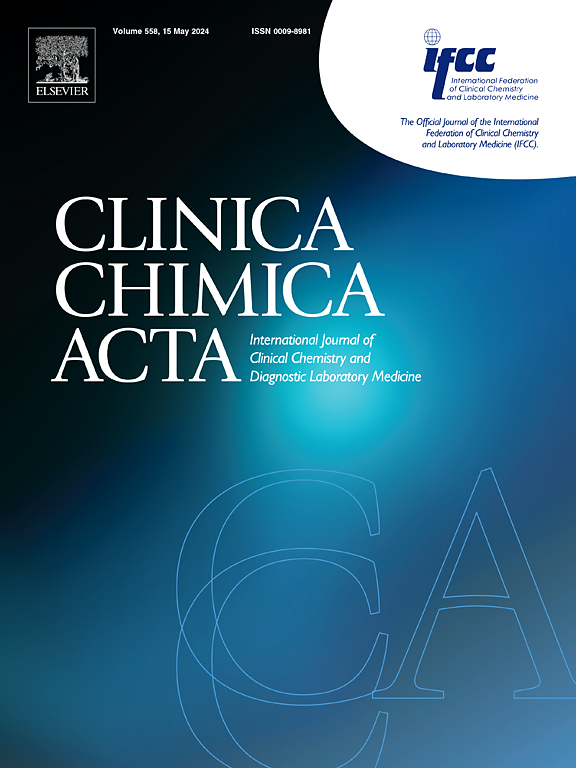口腔疾病生物传感器和数字健康整合方面未开发的机会
IF 2.9
3区 医学
Q2 MEDICAL LABORATORY TECHNOLOGY
引用次数: 0
摘要
口腔疾病,如口腔癌、口腔潜在恶性疾病(OPMDs)、口腔鳞状细胞癌(OSCC),由于其患病率、复杂的管理和对患者生活质量的影响,代表了重大的全球健康挑战。传统的诊断方法虽然有效,但往往受到侵入性、缺乏敏感性和无法提供实时监测的限制。生物传感器,特别是比色和电化学类型,通过实现唾液或呼吸中与疾病相关的生物标志物的快速、无创检测,提供了有希望的替代方案。然而,目前口腔健康领域的生物传感器应用主要是为单次测量设计的,持续监测和与数字健康平台集成的能力有限。本综述综合了过去10年主要数据库中发表的文献,重点介绍了用于口腔疾病监测的唾液生物传感器的最新进展,重点是OSCC和opmd。该综述还探讨了人工智能和数字平台在将生物传感器数据转化为临床有意义的见解方面的新兴作用。解决这些问题可以提高生物传感器的实用性和可及性,为口腔保健提供积极主动的方法,改善患者的治疗效果。这篇论文强调了跨学科合作的必要性,以弥合当前的技术差距,为个性化的口腔病理学预防护理成为标准实践的未来铺平道路。本文章由计算机程序翻译,如有差异,请以英文原文为准。
Unexploited opportunities in oral disease biosensors and digital health integration
Oral pathologies such as oral cancer, oral potentially malignant disorders (OPMDs), oral squamous cell carcinoma (OSCC), represent significant global health challenges owing to their prevalence, complex management, and impact on patient quality of life. Traditional diagnostic approaches, though effective, are often limited by their invasiveness, lack of sensitivity, and inability to provide real-time monitoring. Biosensors, particularly colorimetric and electrochemical types, offer promising alternatives by enabling rapid, non-invasive detection of disease-related biomarkers in saliva or breath. However, current biosensor applications in oral health are predominantly designed for single-time measurements, with limited capabilities for continuous monitoring and integration with digital health platforms. This narrative review synthesizes literature published in the last 10 years from major databases, focusing on recent advances in salivary biosensors for oral disease monitoring, with emphasis on OSCC and OPMDs. The review also explores the emerging role of artificial intelligence and digital platforms in transforming biosensor data into clinically meaningful insights. Addressing these areas could enhance the practicality and accessibility of biosensors, offering a proactive approach to oral healthcare and improving patient outcomes. This paper underscores the need for interdisciplinary collaboration to bridge current technological gaps, paving the way for a future where personalized, preventative care in oral pathology becomes standard practice.
求助全文
通过发布文献求助,成功后即可免费获取论文全文。
去求助
来源期刊

Clinica Chimica Acta
医学-医学实验技术
CiteScore
10.10
自引率
2.00%
发文量
1268
审稿时长
23 days
期刊介绍:
The Official Journal of the International Federation of Clinical Chemistry and Laboratory Medicine (IFCC)
Clinica Chimica Acta is a high-quality journal which publishes original Research Communications in the field of clinical chemistry and laboratory medicine, defined as the diagnostic application of chemistry, biochemistry, immunochemistry, biochemical aspects of hematology, toxicology, and molecular biology to the study of human disease in body fluids and cells.
The objective of the journal is to publish novel information leading to a better understanding of biological mechanisms of human diseases, their prevention, diagnosis, and patient management. Reports of an applied clinical character are also welcome. Papers concerned with normal metabolic processes or with constituents of normal cells or body fluids, such as reports of experimental or clinical studies in animals, are only considered when they are clearly and directly relevant to human disease. Evaluation of commercial products have a low priority for publication, unless they are novel or represent a technological breakthrough. Studies dealing with effects of drugs and natural products and studies dealing with the redox status in various diseases are not within the journal''s scope. Development and evaluation of novel analytical methodologies where applicable to diagnostic clinical chemistry and laboratory medicine, including point-of-care testing, and topics on laboratory management and informatics will also be considered. Studies focused on emerging diagnostic technologies and (big) data analysis procedures including digitalization, mobile Health, and artificial Intelligence applied to Laboratory Medicine are also of interest.
 求助内容:
求助内容: 应助结果提醒方式:
应助结果提醒方式:


